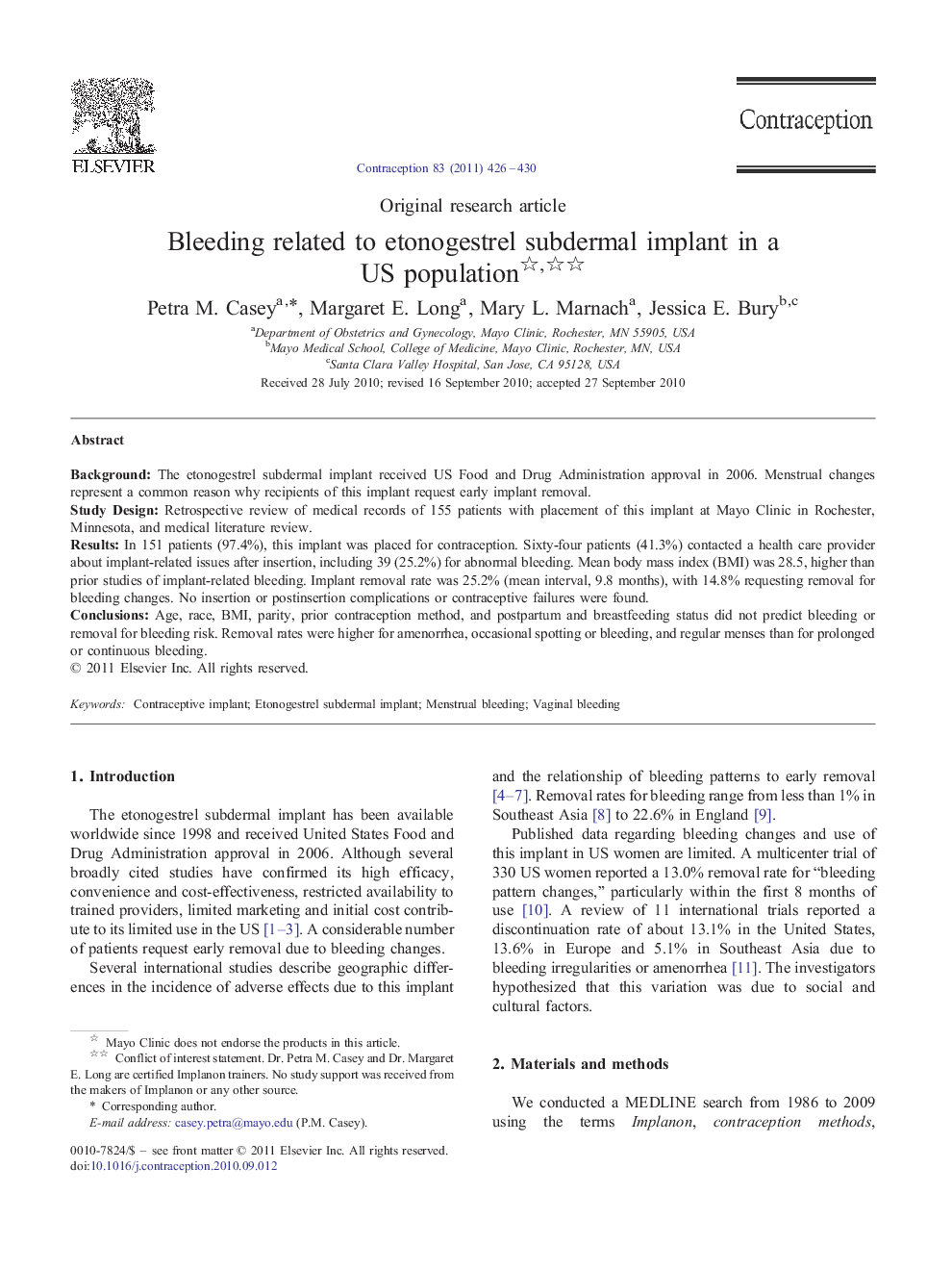| Article ID | Journal | Published Year | Pages | File Type |
|---|---|---|---|---|
| 3914051 | Contraception | 2011 | 5 Pages |
BackgroundThe etonogestrel subdermal implant received US Food and Drug Administration approval in 2006. Menstrual changes represent a common reason why recipients of this implant request early implant removal.Study DesignRetrospective review of medical records of 155 patients with placement of this implant at Mayo Clinic in Rochester, Minnesota, and medical literature review.ResultsIn 151 patients (97.4%), this implant was placed for contraception. Sixty-four patients (41.3%) contacted a health care provider about implant-related issues after insertion, including 39 (25.2%) for abnormal bleeding. Mean body mass index (BMI) was 28.5, higher than prior studies of implant-related bleeding. Implant removal rate was 25.2% (mean interval, 9.8 months), with 14.8% requesting removal for bleeding changes. No insertion or postinsertion complications or contraceptive failures were found.ConclusionsAge, race, BMI, parity, prior contraception method, and postpartum and breastfeeding status did not predict bleeding or removal for bleeding risk. Removal rates were higher for amenorrhea, occasional spotting or bleeding, and regular menses than for prolonged or continuous bleeding.
